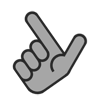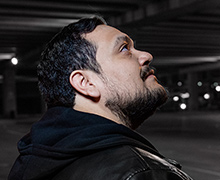


Years in Business
Digital Transformations
Identities Designed
Digital Transformations in Progress

1. Small Teams
When we start a new client project, we consider who within the agency would be the best fit to produce the best work for that particular client. It could be a team of two, three or four people — or our entire staff. Once we’ve created the team, you’ll be able to communicate directly with any one of them.
2. Direct Communication
We don’t have a complicated network of account execs and project managers. If you want to talk directly to the individual that’s designing your new website, corporate identity or application — you can. Our creatives and developers are involved in all of our projects from the very start.
3. Identifying Objectives
At the start of every project, we outline the expected objectives — what each new website, print piece or re-brand is trying to achieve. From a business perspective, we look at: the expected result; the current user; and the target demographic. This aligns our expectations and allows for a transparent relationship with our clients from the beginning.
4. Measuring Success
Without clearly defined objectives, the result of any work is difficult to measure. Success lies in constantly questioning our creative decisions and ensuring they’re strategic. Design, functionality, marketing… do they all contribute to the overall project goal? What’s the project objective — to increase brand awareness, an uplift in online sales, or to reposition a brand within its market? Staying focused on the defined objectives always produces the most effective results.







Concept is where the project is defined, and the key tool for getting this started is the creative brief. It’s the document we rely on if we have questions about the goals or requirements of the project. Once the scope of the project is fully understood, we develop a project plan.
The discovery phase begins with the kick-off meeting in which the project is officially started. This phase largely involves research into the competitive landscape, the users’ needs and goals, expectations, etc.
Content development and design actually tend to occur concurrently rather than sequentially. We’ll define the information architecture of the site (which is done in the design phase) before we start developing the content.
Design begins with the development of the site’s information architecture and its testing using low-fidelity prototypes. Once the website IA is worked out, the actual visual design phase begins. The design phase involves two or three rounds of creative reviews and revisions before final approval.
The development phase involves building the site framework, and then the pages themselves. We’ll review the site framework before the bulk of the pages are built out to make sure that the coding is up to par. For the last part of the development phase, the site goes through a thorough content and code quality assurance (QA) check.
Launch is pretty straightforward — once the site is launched, we perform a comprehensive link check, make sure that everything is in the right place, and also check that all functionality is working as expected.
A fantastic website design can be the most cost-effective advertising method for your business. The look and functionality of your website greatly influences whether a customer follows through with a purchase or contacts you for more information.
We work collaboratively with our clients. We see you as partners throughout every project, and we view our collaboration as the engine behind your successes.